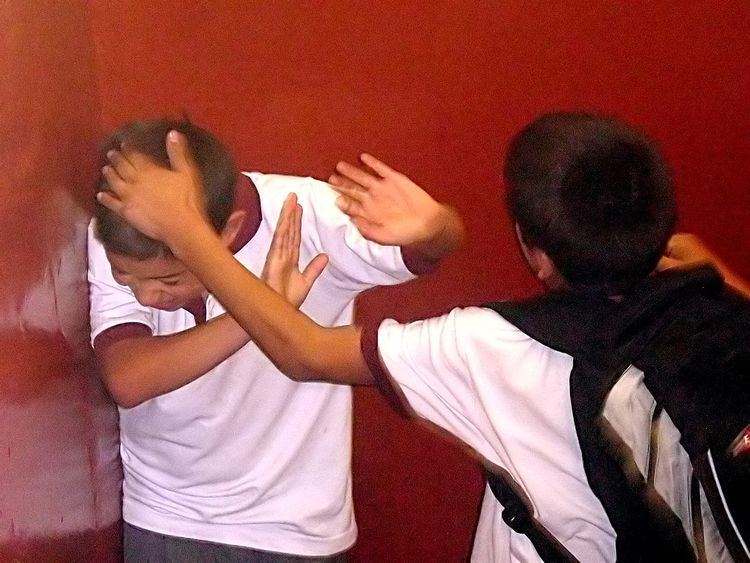Specialty emergency medicine ICD-9-CM 995.81 | ICD-10 T74.1 | |
 | ||
Physical abuse can be defined as any intentional act causing injury or trauma to another person by way of bodily contact. In most cases, children are the victims of physical abuse, but adults can also be victims, as in cases of domestic violence or workplace aggression. Alternative terms sometimes used include physical assault or physical violence, and may also include sexual abuse. Physical abuse may involve more than one abuser, and more than one victim.
Contents
Forms
Physical abuse means any non-accidental act or behavior causing injury, trauma, or other physical suffering or bodily harm. Abusive acts toward children can often result from parents' attempts at child discipline through excessive corporal punishment.
Causes
A number of causes of physical abuse against children have been identified, the most common of which, according to Mash and Wolfe, being:
Effects
Physically abused children are at risk for later interpersonal problems involving aggressive behavior, and adolescents are at a much greater risk for substance abuse. In addition, symptoms of depression, emotional distress, and suicidal ideation are also common features of people who have been physically abused. Studies have also shown that children with a history of physical abuse may meet DSM-IV-TR criteria for posttraumatic stress disorder (PTSD). As many as one-third of children who experience physical abuse are also at risk to become abusive as adults
Researchers have pointed to other potential psycho-biological effects of child physical abuse on parenting, when abused children become adults. These recent findings may, at least in part, be carried forward by epigenetic changes that impact the regulation of stress physiology. Many other potentially important consequences of child physical abuse on adolescent and adult physical and mental health and development have been documented via the Adverse Childhood Experiences (ACE) studies.
Treatment
Seeking treatment is unlikely for a majority of people that are physically abused, and the ones who are seeking treatment are usually under some form of legal constraint. The prevention and treatment options for physically abused children include: enhancing positive experiences early in the development of the parent-child relationship, as well as changing how parents teach, discipline, and attend to their children.
Evidence-based interventions include cognitive behavioral therapy (CBT) as well as video-feedback interventions and child-parent psychodynamic psychotherapy; all of which specifically target anger patterns and distorted beliefs, and offer training and/or reflection, support, and modelling that focuses on parenting skills and expectations, as well as increasing empathy for the child by supporting the parent's taking the child's perspective.
These forms of treatment may include training in social competence and management of daily demands in an effort to decrease parental stress, which is a known risk factor for physical abuse. Although these treatment and prevention strategies are to help children and parents of children who have been abused, some of these methods can also be applied to adults who have physically abused.
In other animals
Physical abuse has been described among Adélie penguins in Antarctica.
